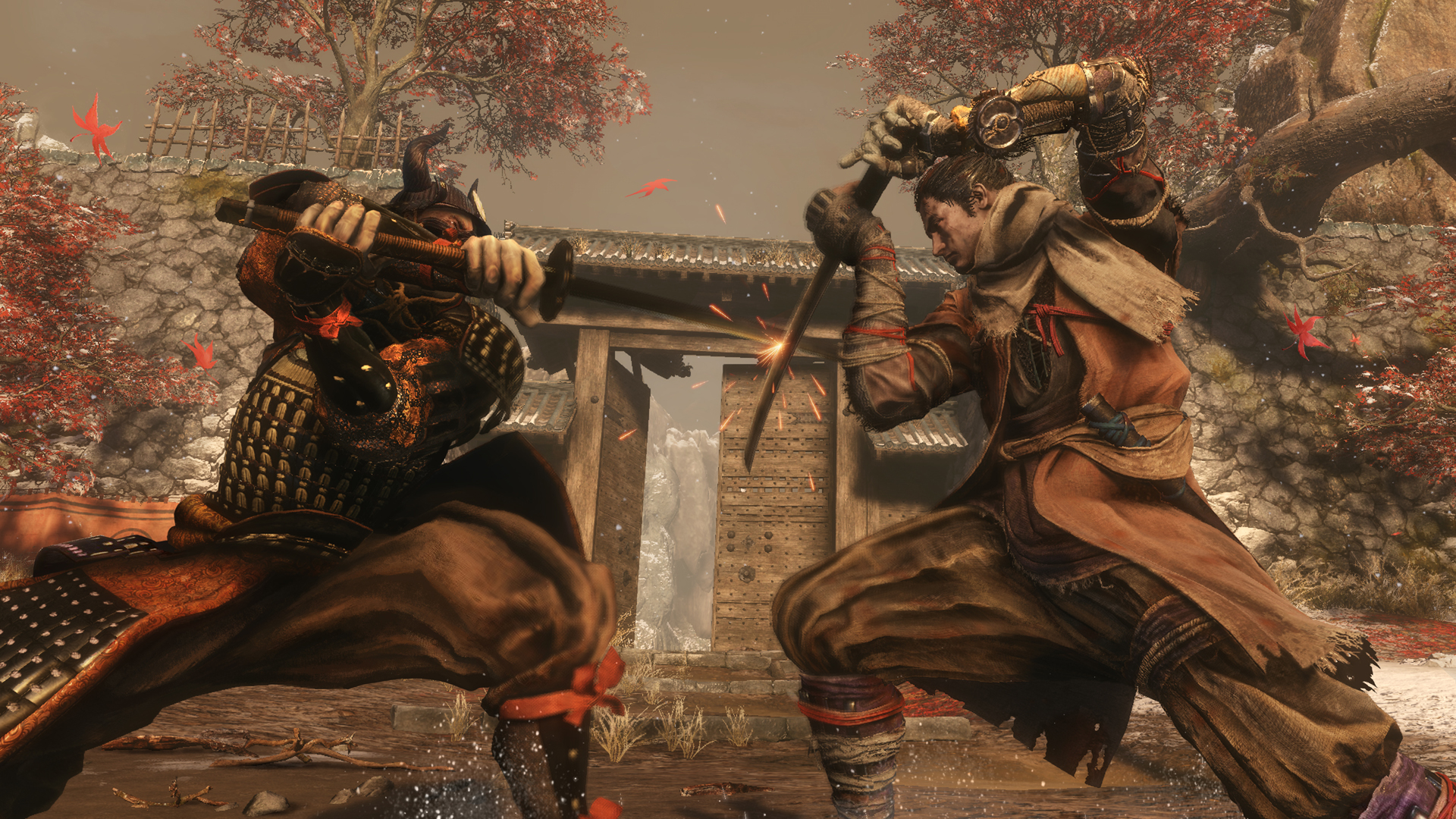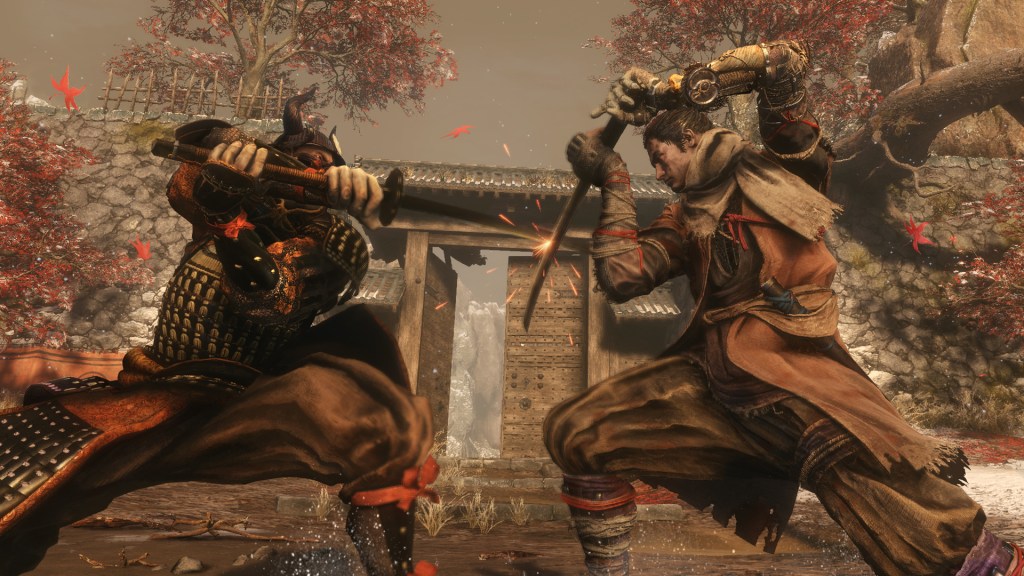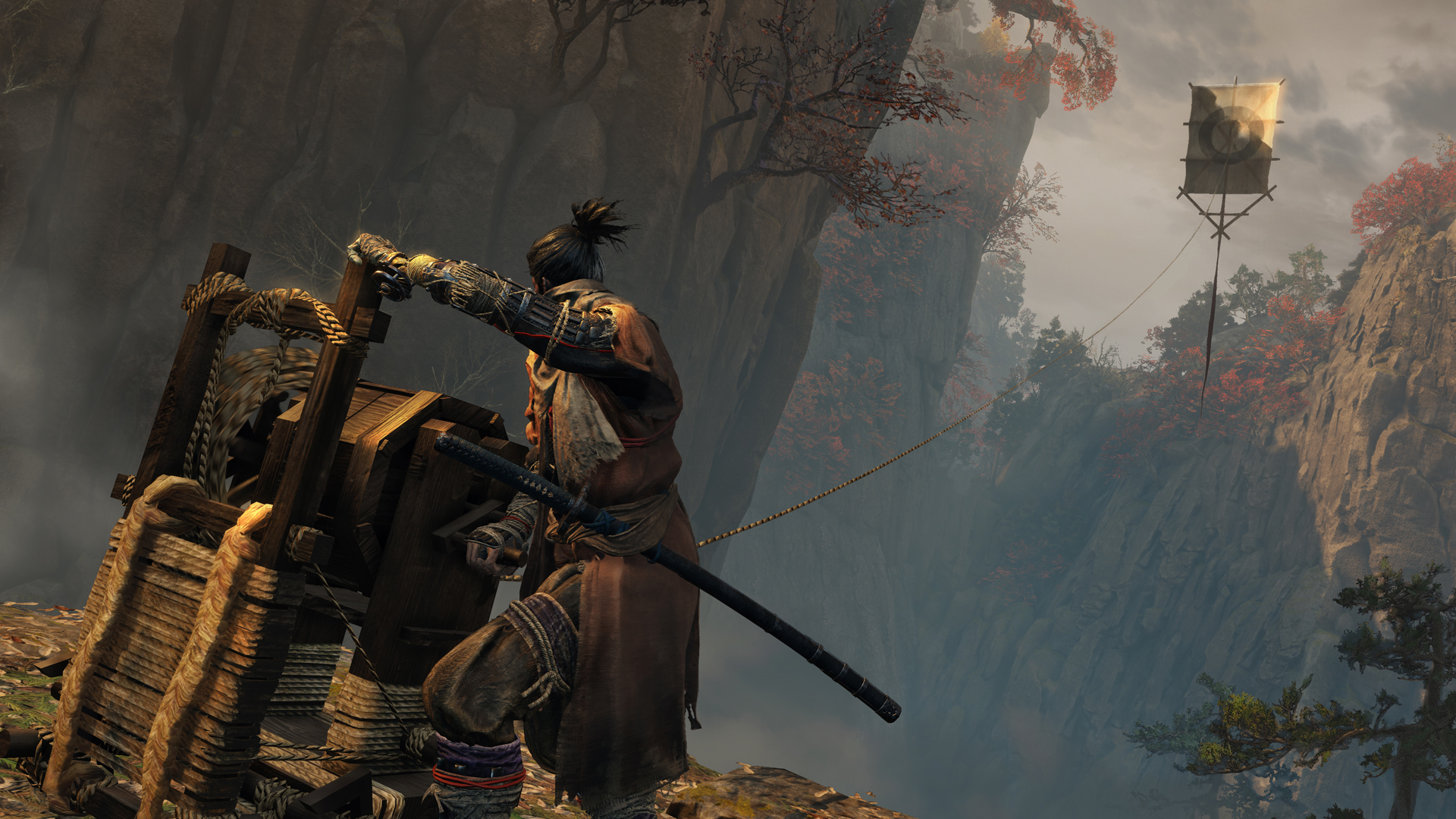I got the Platinum trophy in Demon’s Souls. It’s a point of pride for me. Though I’ve dabbled in Dark Souls and Bloodborne since, I’ve never really felt the need to continue the self flagellation of the soulsborne games. While most people may have been clamoring for Bloodborne 2, my interest was piqued when FromSoftware announced an entirely new IP. Sekiro: Shadows Die Twice keeps the soul of the soulsborne titles but gave the studio a freedom to explore something different than the expectations that would be placed behind a sequel to their previous titles.
If you felt that the soulsborne games were a bit too obtuse in their storytelling, leaving the narrative up to the world and lore seeded throughout, Sekiro presents a more direct, character-centered narrative. The lead character—the one-armed shinobi—isn’t player created. He’s a defined character with a backstory, a clear role within the narrative, and a voice. He’s sworn to protect the divine heir, a young boy who is the master of the shinobi. There are also distinct and unique characters who are each a part of the story while also serving a mechanical function within the game. The mysterious man carving idols outfits the shinobi’s prosthetic arm with new tools for his fight, and the undying samurai acts as a training dummy for you to practice different skills on.
Sekiro’s world is a stunning vision of Medieval Japan that feels like it could actually exist, save for the dark powers and odd creatures that litter the landscape. It has roots in historical fact, but simply exists as a backdrop for a wonderful fiction. Don’t worry, you’ll still get that world lore that FromSoftware is famous for, and there are a lot of tiny details in the world to discover and set forums ablaze with theories and conversation.
I got to spend about three hours with Sekiro, and in that time I got a good sense of the unique mystery that permeates the game, both in the characters and the world. I also died. A lot.
FromSoftware strives to make death feel meaningful. It should teach a lesson. In the Souls games, losing your life meant losing experience and items. It made the game demonstrably harder the more you failed, because you would set yourself back little by little (or a lot by a lot, if you liked to take risks). Sekiro uses death as both a gameplay mechanic and a core part of the story. Progress is still lost on death, but it’s no longer the core conceit of meeting the wrong end of tooth, claw, sword, or pike.
The shinobi can resurrect after his death, creating interesting gameplay scenarios when you can actually use coming back to life within combat to get the jump on enemies. It’s not ideal though. Using this power—known as the Dragon Heritage—comes with significant consequences in the world around you. The more you die, the more an illness is unleashed upon the world as your powers leach off the life force around you in order to feed your own immortality. It also accounts for how the Shinobi is able to “checkpoint,” and return after actual deaths each time. This isn’t a Nathan Drake “let’s try again” type of scenario. The shinobi is actually dying and being reborn repeatedly, which is harming the world and the people in it.
Making death consequential means the inverse has to also be true. Success needs to feel earned. Advancement and growth and experience needs to be a part of the player as much as the character. FromSoftware games have always been about teaching the player how to overcome challenges, rather than simply giving them really powerful weapons or spells. There will still be a bunch of gear and skills to collect and use in Sekiro, but none of them are the “ultimate weapon” that would guarantee a win in a combat scenario. You still have to have the skills that come from learning enemy encounters, often through repeated failures.
And that’s part of the reason they gave us three hours to play. Understanding the cycle of failure is hard to do in a short demo period. Getting to play the game for a long time gave me the opportunity to explore different paths, fail (a lot), and then learn from those failures and feel a sense of immense success when I even managed to topple the smallest challenges. Look, I admit it. I even died multiple times in the opening tutorial area. It’s not designed to be overly hard, but it will quickly teach players what they’re in for.
Freedom to Fall in Many Different Ways
Having multiple paths to travel feels almost metroidvania-esque, but for combat scenarious as opposed to bypassing environmental obstacles or challenges. If you can’t beat one challenge, you can head off down a different path to potentially gain new skills or tools that you can take back to the other path to use. One miniboss fight was against a towering ogre who could pick me up and slam me into the ground with ease. Apparently affected by fire, I hadn’t yet traveled the alternate path to get that tool for my prosthetic while the guy next to me did. Still, I managed to get much closer to taking the ogre down without the fire. While the game will provide the tools you need (sometimes hidden behind really tough challenges), it’s still up to the skill of the player to learn how to most effectively use that tool. No solutions in Sekiro come down to “attack with a more powerful thing” in order to win, but there is often more than one right answer.
The posture-based combat system means that killing blows are almost always fatal if you can get your sword into an enemy, but that will be preceded by a lot of clashing of blades before the pointy end can get between their ribs. It’s a series of parries and counters, similar to but infinitely more complicated than games like the Arkham series. You have to learn each enemy, their tells, how to counter them, and then put that all together with multiple enemies when being attacked by a group. Sekiro isn’t one to hold your hand, so players will have to figure out for themselves how to overcome even seemingly simple fights. Every fight feels like an intimate affair. This isn’t a hack-and-slash game, and if you try to play it like one, you’ll lose. You’ll need to learn your enemy, dance closely with them, and when you finally put their body in the ground, the success will feel well-earned. When every moment feels like it could be your end, just staying alive is a victory.
Players have a lot more freedom, but that includes the freedom to fail, and I promise you’ll take FromSoftware up on that offer. Even traversal is more free than what you might expect in a FromSoftware game. It’s been shown off extensively, but actually getting to use the grapple to move around the near-seamless world was a pretty exciting feature that set up some unique combat opportunities.
FromSofware wanted to create a different kind of game, giving players vertical freedoms and more options than they’ve ever had in the soulsborne games. What’s not lost as they move to a more character-focused and open game is the opportunity—or requirement, rather—for players to learn and grow with their character, leveling up their own skills as they are taught lessons through failure. Three hours was just enough time to learn that I knew nothing, and yet learn just enough to taste the success of felling a tough group of enemies or a miniboss.
Had we gotten another Boodborne or Souls game, FromSoftware would have been corralled into certain features that were to be expected. By breaking out with Sekiro as a new IP, they are allowed the freedoms that they are affording their players to still do what they do best while experimenting with some alternate themes and ideas. Death still means something. It’s still a very difficult, yet rewarding game. And their world crafting and creature design are nigh unrivaled. Sekiro: Shadows Die Twice could pique the interest of new players who might have been uninterested in the soulsborne games, but it’s still got enough FromSoftware DNA to earn itself a spot in the pantheon of tough games that focus on leveling up the players themselves, rather than the game’s character.
Sekiro Shadows Die Twice was played at a preview event hosted by Activision. Travel and accommodations were provided.
Sekiro Shadows Die Twice March 2019
-
Sekiro Shadows Die Twice
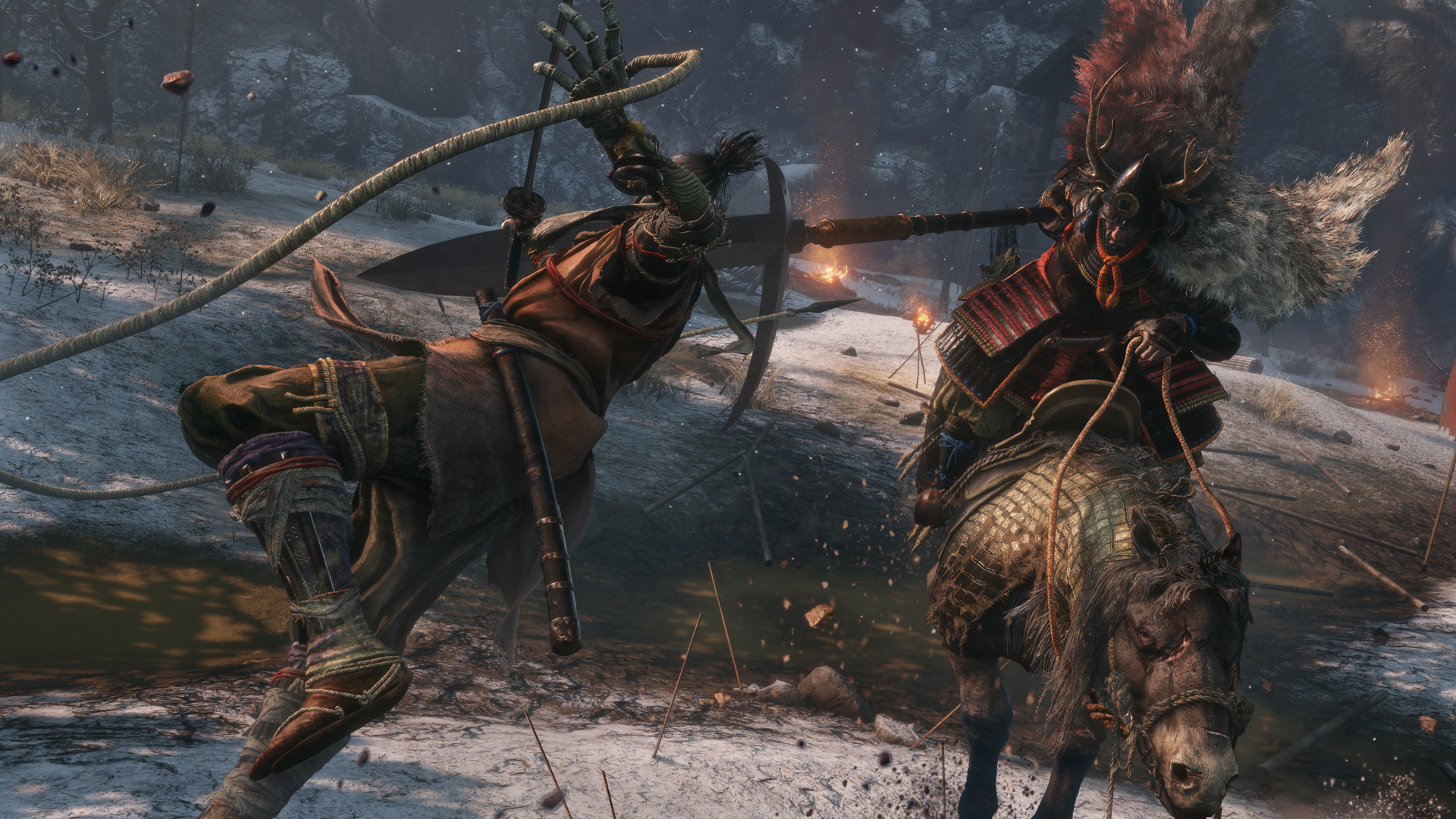
-
Sekiro Shadows Die Twice
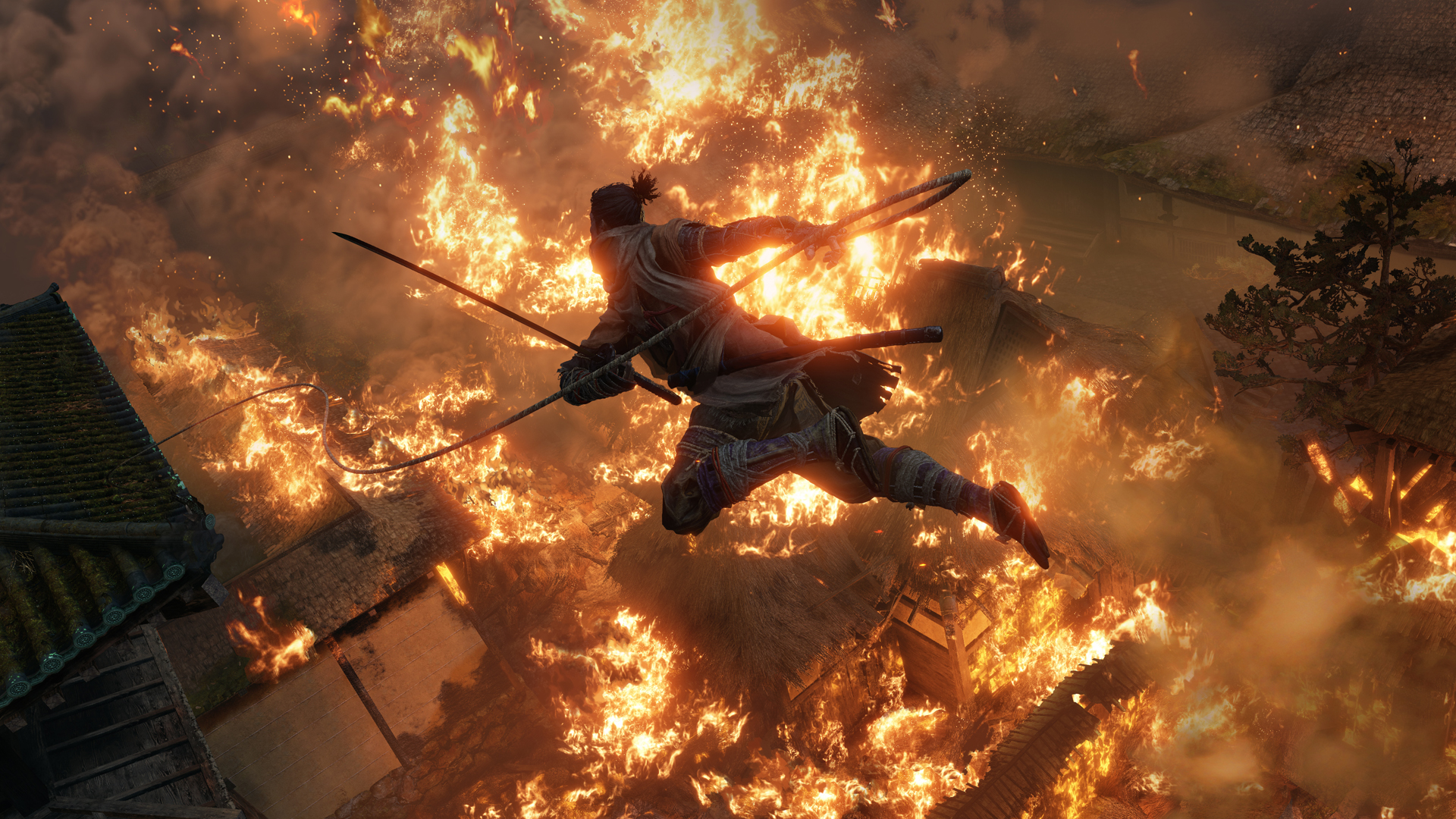
-
Sekiro Shadows Die Twice
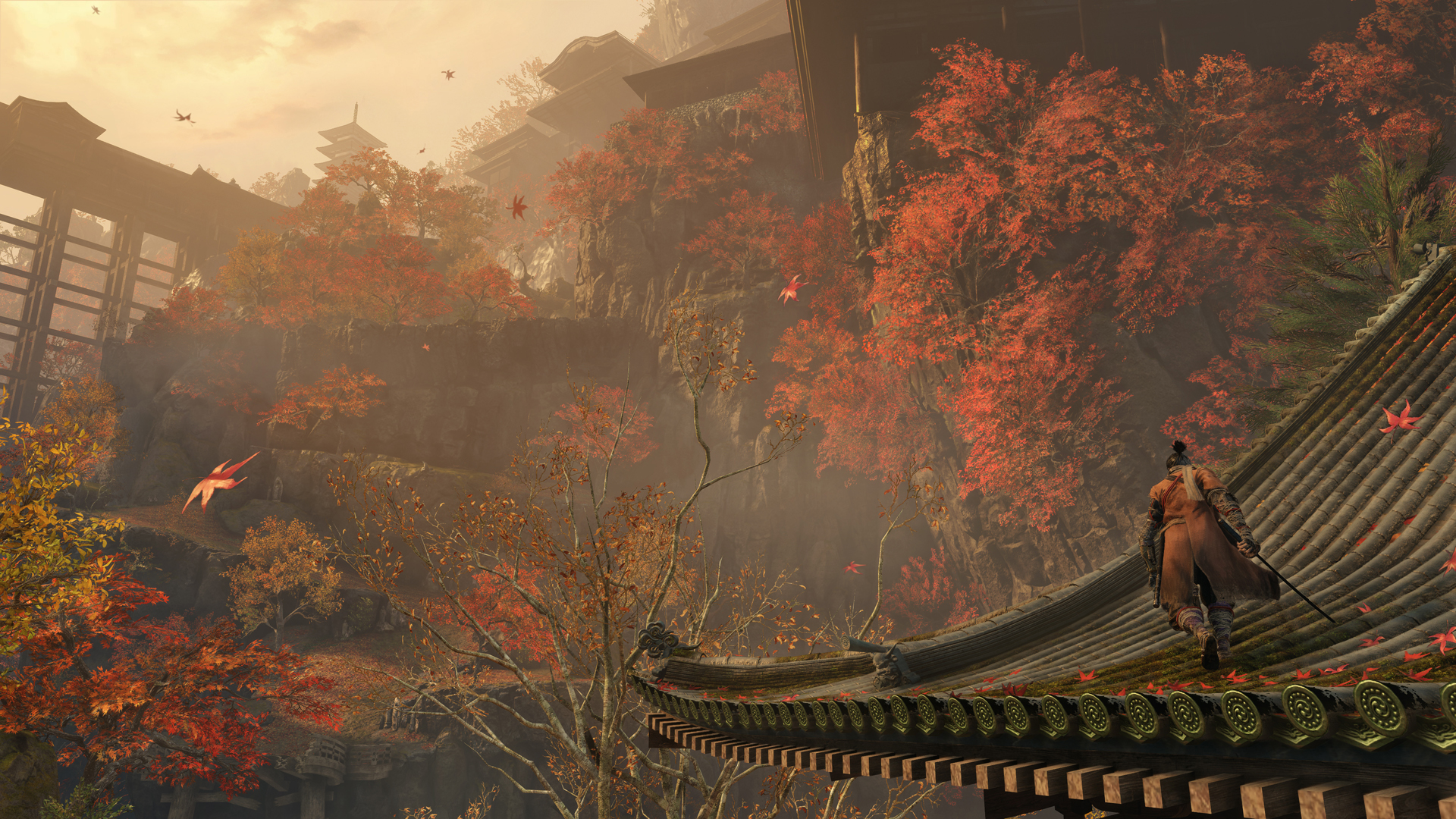
-
Sekiro Shadows Die Twice
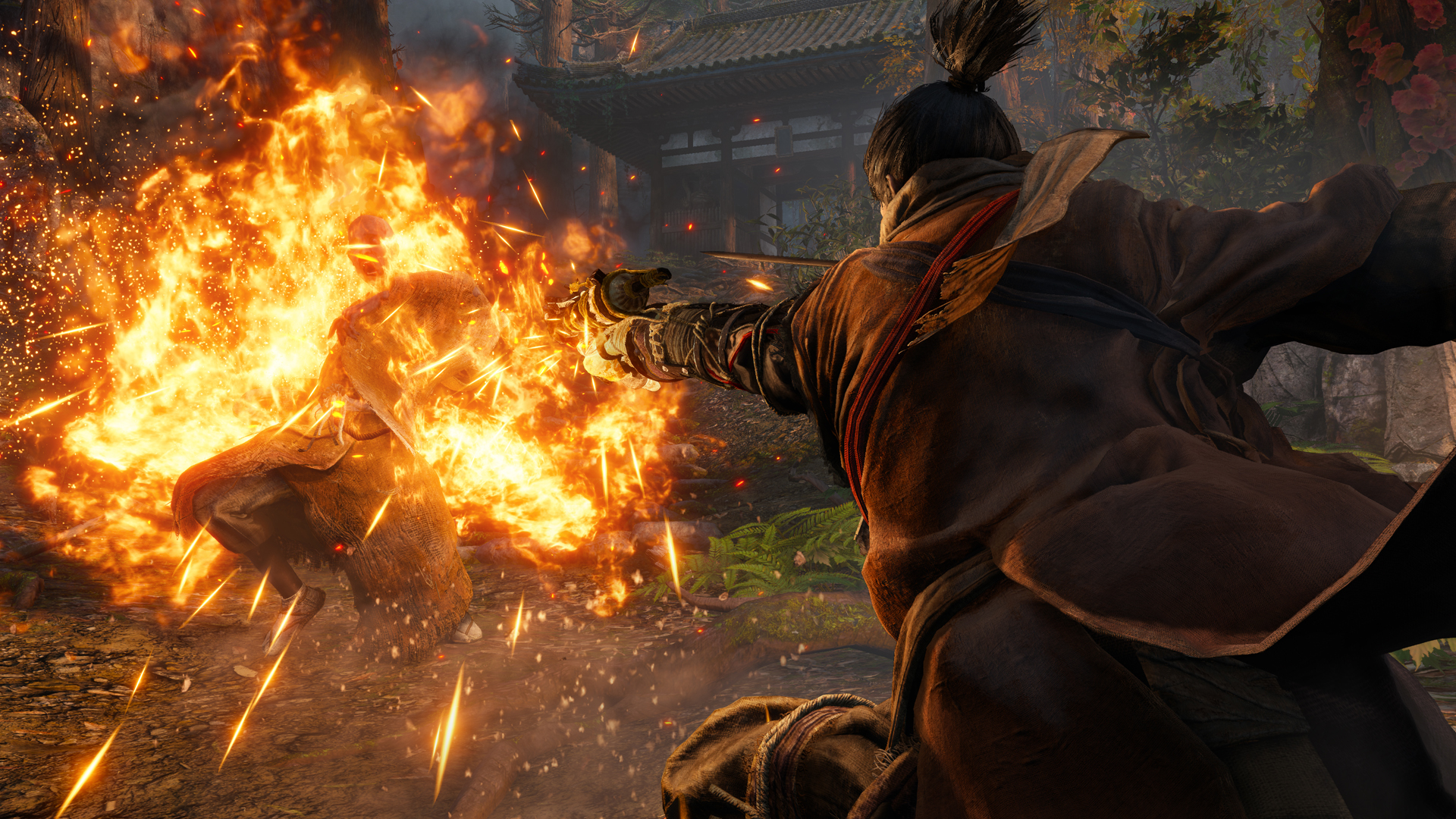
-
Sekiro Shadows Die Twice
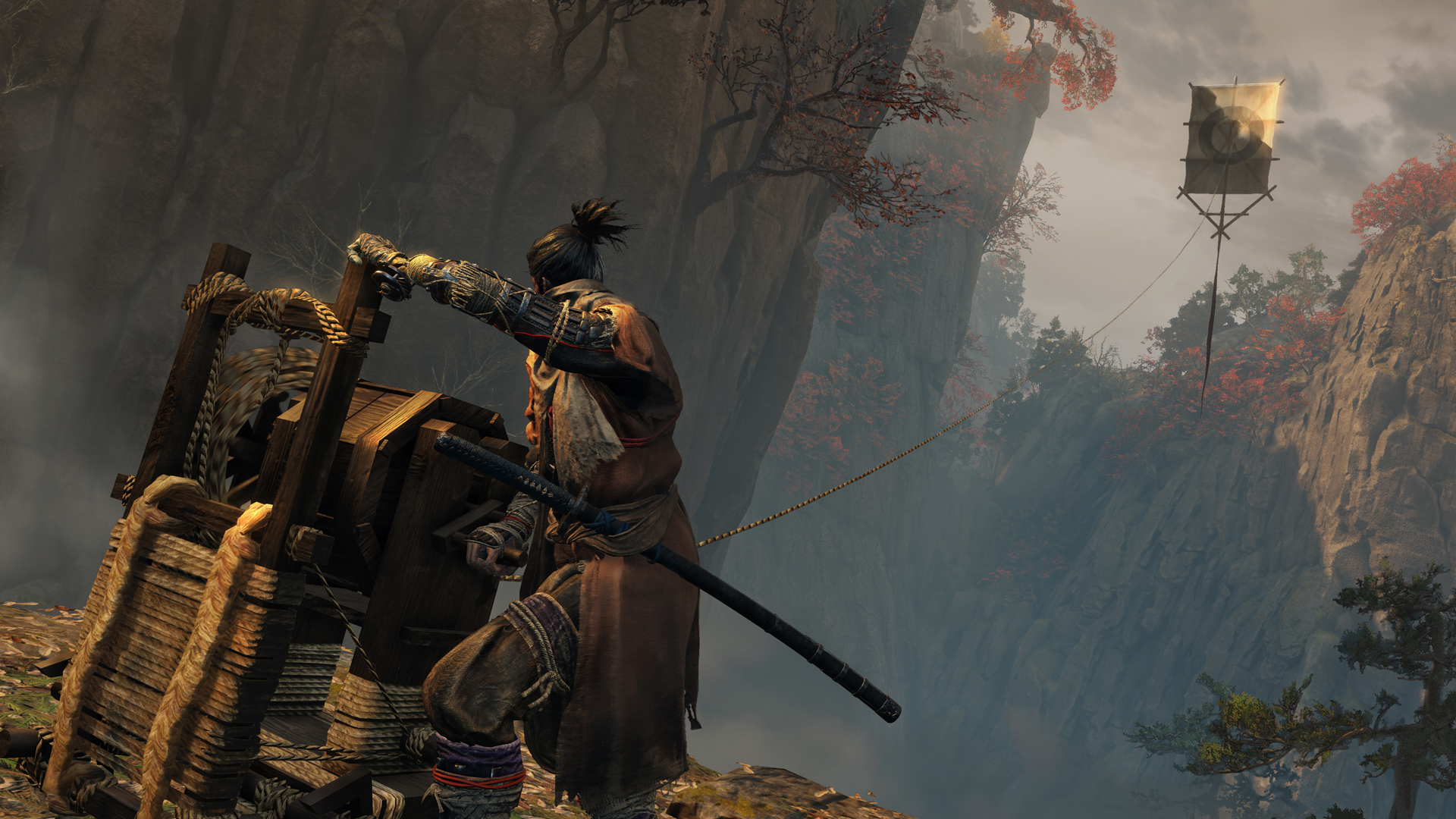
-
Sekiro Shadows Die Twice
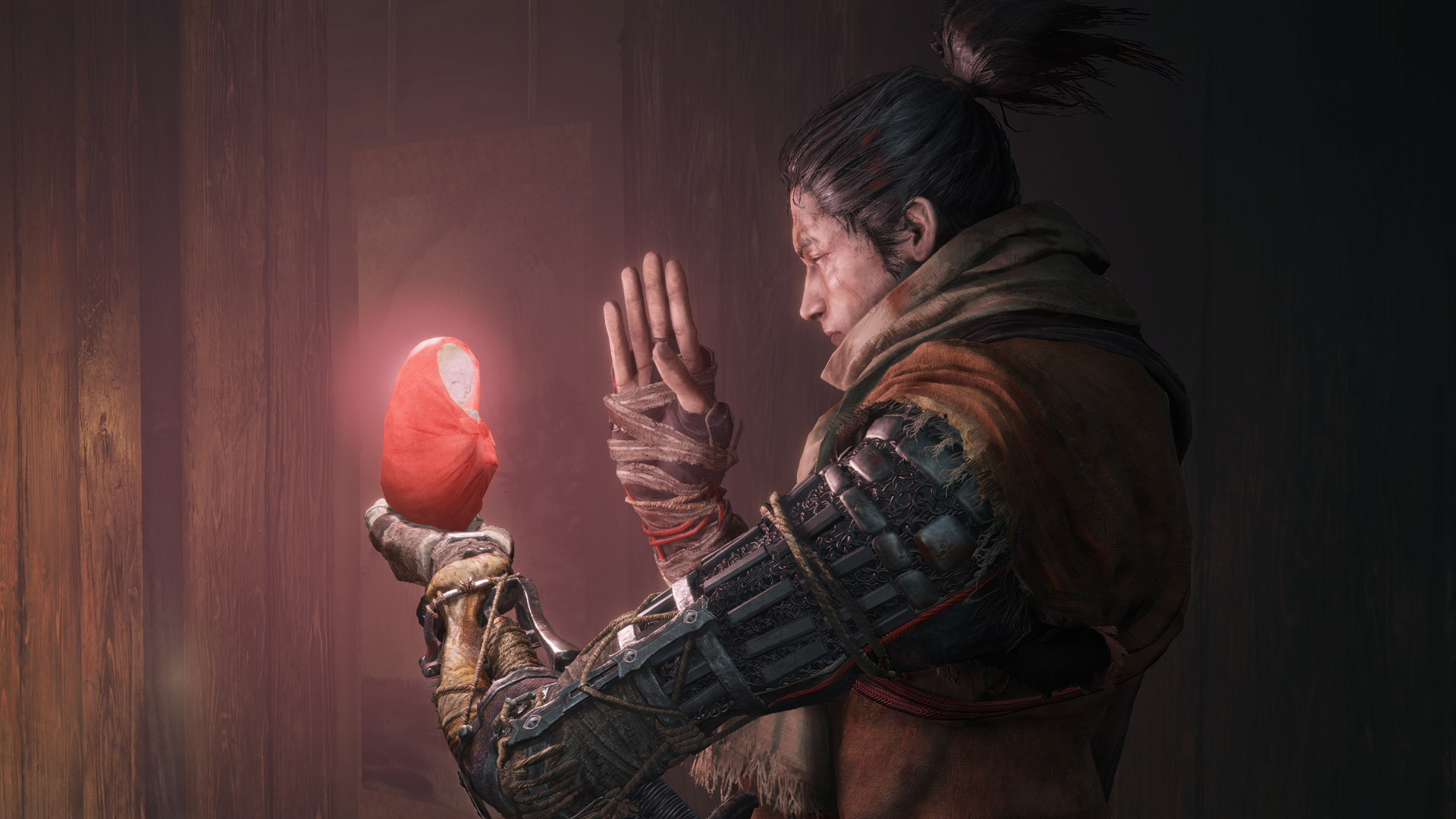
-
Sekiro Shadows Die Twice
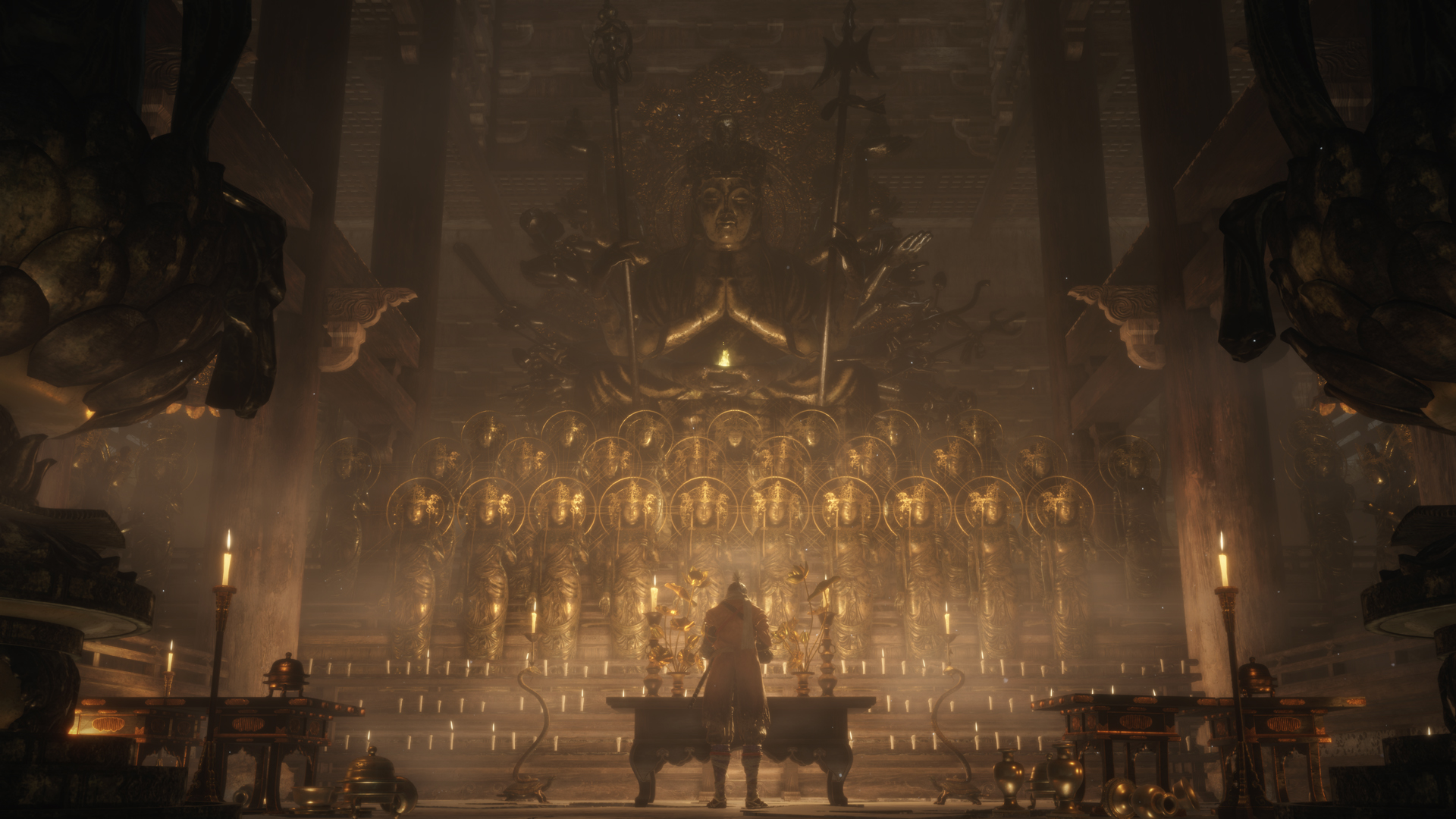
-
Sekiro Shadows Die Twice
